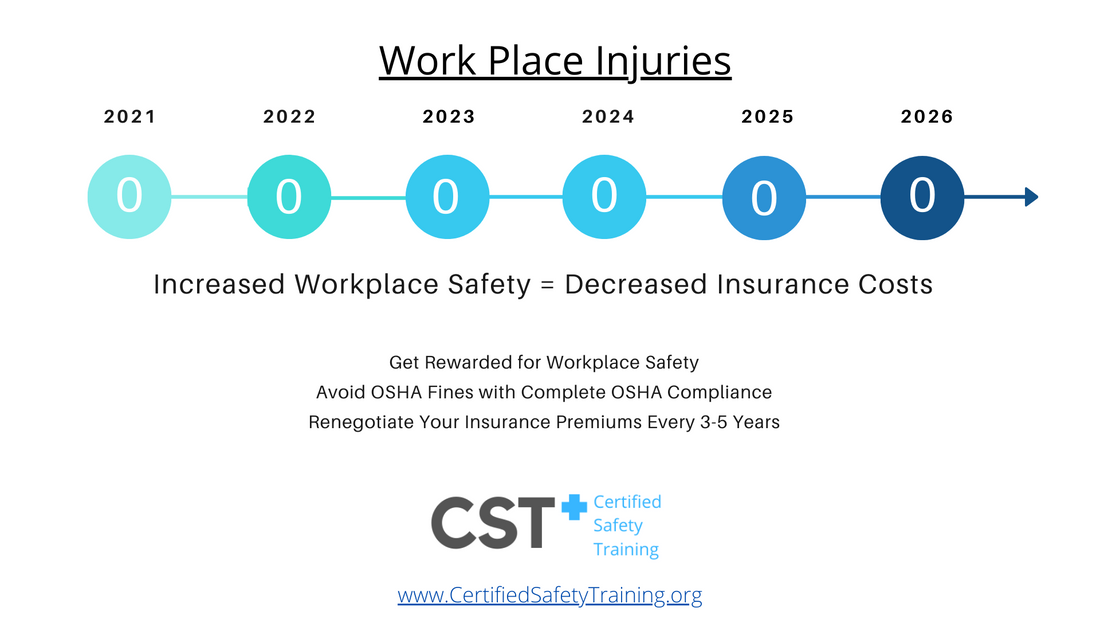Three Steps to Increase Veterinary Workplace Safety and Decrease Insurance Costs

Share
Three Steps to Increase Workplace Safety and Decrease Insurance Costs
The Occupational Health and Safety Administration (OSHA) states that “Workplace fatalities, injuries, and illnesses cost the country billions of dollars every year. In its 2018 Workplace Safety Index, Liberty Mutual estimated that employers paid more than $1 billion per week for direct workers' compensation costs for disabling, non-fatal workplace injuries in 2015.”
The National Safety Council (NSC) estimated that work-related deaths and injuries cost the nation, employers, and individuals $151 billion in 2016.
Employers that implement effective safety programs may significantly reduce injuries and illnesses and reduce the costs associated with these injuries and illnesses, including workers' compensation payments, medical expenses, and lost productivity. In addition, employers often find that process and other changes made to improve workplace safety and health may result in significant improvements to their organization's productivity and profitability.
Here’s how to increase your veterinary clinic's workplace safety and decrease your insurance costs in three easy steps:
Step 1: Proper Written Plans–Generate A Custom Written Safety Manual
A custom written OSHA Safety Manual will save you time and money. Being able to point to an OSHA Safety Manual that can be accessed before or after an injury will help keep you in compliance and show your employees and colleagues that their safety matters. Reviewing this manual annually and coupling it with proper training and recordkeeping will drastically decrease liability and insurance premiums.
Step 2: Proper Training–Ensure Everyone is Trained
Safety in the workplace goes beyond policies and written plans. Communication and employee participation are an integral part of any successful work safety program. Management should encourage employees to use proactive safety methods and identify unsafe situations before something goes wrong. Proper training should:
- Be interactive and require an employee to think proactive about their workplace.
- Show employees which safety equipment they need to use for each task.
- Let your employees know they have a responsibility to report unsafe conditions.
- Encourage collaboration between employees to enact proactive safety measures.
- Incentivize a clean and safe workspace to avoid slips, trips, and falls.
Step 3: Proper Recordkeeping–Reducing Insurance Premiums
Insurance carriers measure the costs of workers’ compensation benefit claims, civil liability damages, and litigation expenses. Claims may include employees, contractors, or even clients. Insurers also rely on factors such as the number of employees on the payroll, number of contractors and customers, and your industry to establish your base premium rate.
When fewer employees hurt themselves or become ill, the insurance company pays out fewer claims. According to the OSHA, successful health and safety programs reduce injury and illness costs by between 20 and 40%. Consequently, employers can reduce out-of-pocket expenses and reduce insurance premiums when they tend to workplace safety.
Having proper recordkeeping–annual written plan reviews, proof of training, updated safety data sheets, etc.--will lead to a stronger case when negotiating insurance premiums. If you’ve had zero workplace injuries in the past 3-5 years, it may be worth asking your insurance company how you stack up and if your insurance premiums are ready for a reset.
The Bigger Picture: Going Beyond Insurance Premiums
Injuries and illness in the workplace cost much more than increased insurance premiums. When someone must take time off from work, it lowers productivity and reduces profits. If a skilled worker cannot return to work, you’ll need to recruit and train a new employee, which costs substantial time and money.
An unsafe workplace can also negatively impact the quality of your product and your company morale. Word travels fast, and people do not want to work for a company that does not protect its employees.
Current employees will not be as productive, attentive, or loyal and turnover rates can increase. Attracting new employees may become a major issue, and you could need to pay higher than normal wages to get the people you need.
Building a culture that reinforces the importance of safety, will positively benefit your brand, your employees, and your profits.
